Learning Center: Stalemate
Stalemate
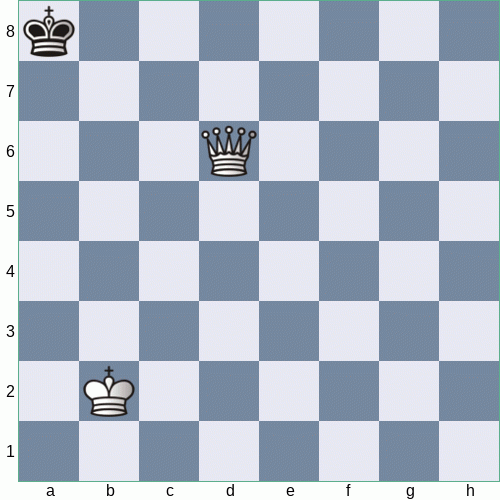
The position shown here illustrates a common stalemate situation. White has just moved his queen to c7. Black is not in check, but has no legal moves to make (every king move would put him in check which is never allowed, and he has no other pieces). Since he is currently safe but unable to play, the game ends in a draw.
The player must have no legal moves of any kind. It's a common misconception that only king moves matter, but if there are other pieces on the board and one or more of them can legally move, it's not stalemate.
Beginners often confuse stalemate with checkmate, but in stalemate the king is under no direct threat. Also see Checkmate vs. Stalemate.
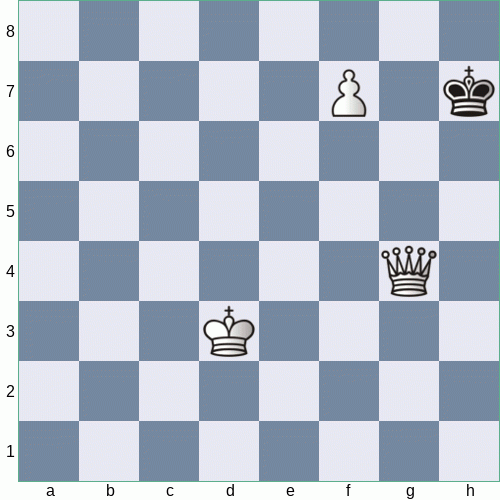
The diagram shown here depicts a typical accidental stalemate situation. White has an easily winning position, but in his eagerness to win he promotes his pawn to a second queen. This is intended to enable a quick checkmate but instead it takes away all the black king's moves and thus produces stalemate. White must settle for a draw instead of a win.
Note that if White had promoted to a rook instead of a queen, not only would there be no stalemate but there would be a quick forced mate after 1. f8=R Kh6 2. Rh8#.
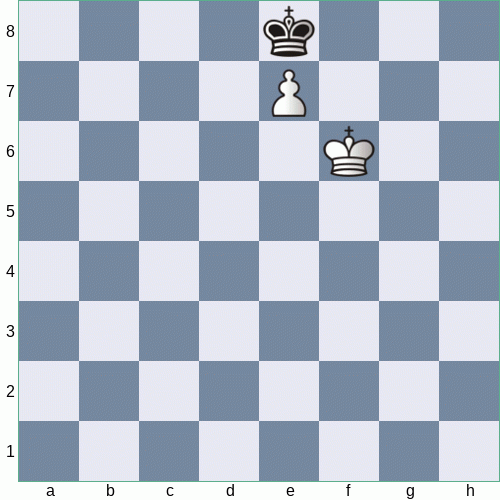
For example many King+Pawn vs. King endgames are book draws. This is because, as the stronger side pushes the pawn closer to promotion, a position like the one shown will ultimately result. In this position, White must either abandon his pawn with a move like Kg7, or else play Ke6 which results in stalemate.
Other standard endings that feature stalemate finishes are King+Queen vs. King+RookPawn, King+Queen vs. King+BishopPawn, and King+(wrong)Bishop+RookPawn vs. King.
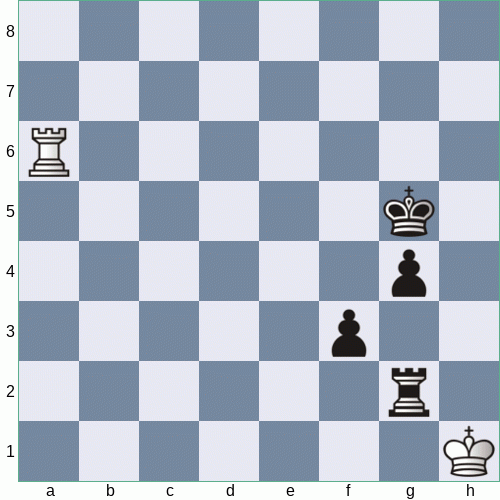
In the position shown here, Black appears well on his way to a win. But White, noting that only his rook can currently move, plays the clever 1. Rg6+! If Black takes the rook, White has achieved stalemate!
Black can try to maintain his winning chances by ignoring the rook and playing 1...Kf5, 1...Kf4 or 1...Kh5 instead. But wherever the black king goes, White can continue checking and offering his rook as a sacrifice. Black has no way to escape these checks, so the game ends as a draw whether the rook is captured or not.
Now test your understanding on the following positions. Try to work out the answer yourself before clicking the "Reveal" button to verify.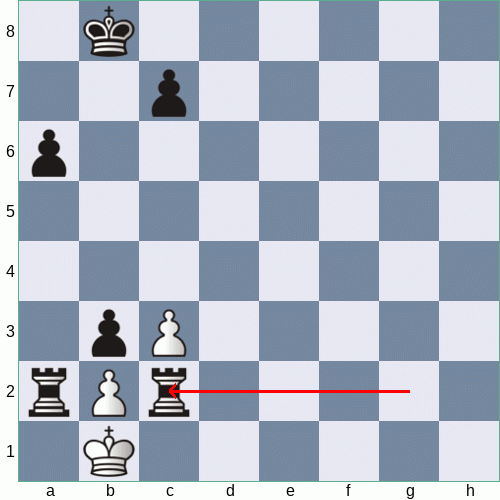 Black played Rc2; is it stalemate?
Black played Rc2; is it stalemate?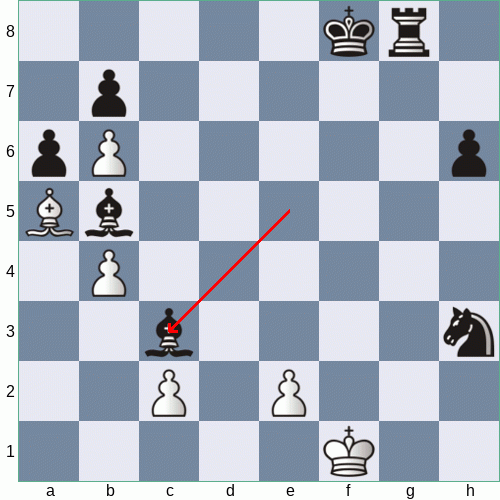 Black played Bc3; is it stalemate?
Black played Bc3; is it stalemate?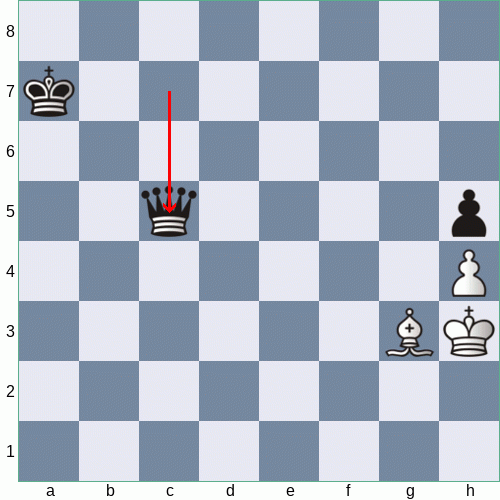 Black played Qc5; what should White do?
Black played Qc5; what should White do?



